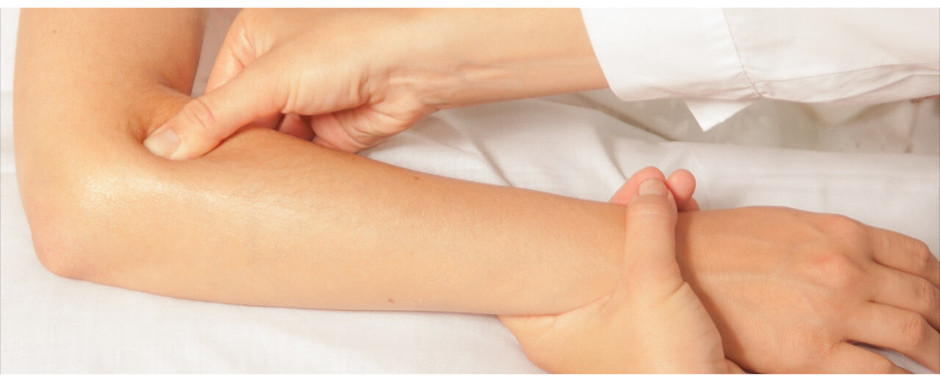Guidance for releasing thickened fascia
Lesson 4 Module 3
Releasing myofascial thickening involves applying targeted techniques to the trigger point, helping to alleviate pain, reduce muscle tension, and restore optimal function. Once you have located the trigger point, follow these guidelines for effective myofascial release:
Steady Pressure: Apply steady and controlled pressure to the trigger point using your fingertips, thumbs, or a massage tool like a tennis ball. Start with gentle pressure and gradually increase it as your body adjusts. Find a level of intensity that is tolerable but still effective for releasing tension.
Direct Pressure or Compression: Maintain direct pressure on the trigger point for approximately 30 seconds to a minute. This sustained pressure helps deactivate the trigger point and release the tension within the myofascial tissue. During this time, focus on deep breathing and consciously relaxing the surrounding muscles.
Slow and Deep Breathing: As you apply pressure to the trigger point, focus on slow, deep breathing. Deep breaths help relax your body, reduce tension, and enhance the effectiveness of the myofascial release technique. Breathe deeply into the belly, inhaling through the nose and exhaling through the mouth.
Communication with Your Body: Pay attention to your body's responses as you apply pressure to the trigger point. Notice any sensations such as tenderness, referred pain, or changes in muscle tension. This awareness allows you to adjust your pressure and technique accordingly, ensuring a therapeutic and safe experience.
Gentle Movement: After releasing the pressure from the trigger point, introduce gentle movement to the affected area. This can include slow, controlled stretches, range-of-motion exercises, or functional movements that engage the targeted muscle group. Gentle movement promotes further release of tension, enhances blood flow, and encourages flexibility.
Reassess and Repeat: Reassess the trigger point after the initial release and gauge any changes in tenderness, sensitivity, or pain. If necessary, you can repeat the myofascial release technique on the same trigger point, adjusting the pressure and duration as needed. Be attentive to your body's response and avoid excessive pressure or overworking the tissue.
Self-Care and Maintenance: Following myofascial release, it's essential to engage in self-care practices that support overall tissue health and prevent the recurrence of myofascial thickening. This may include regular stretching, strengthening exercises, self-massage techniques, stress management, and maintaining good posture and body mechanics.
Remember, myofascial release is a gradual process, and results may vary for each individual. If you have any concerns or are unsure about the technique or its suitability for your specific condition, consult with a qualified healthcare professional or manual therapist who can provide guidance, personalized recommendations, and ongoing support.
By following these guidelines, you can effectively release myofascial thickening, promote pain relief, improve muscle function, and enhance overall well-being. Be patient, listen to your body, and approach myofascial release with a gentle and mindful attitude to achieve the best possible outcomes.



Leave a comment
Comment as a guest: